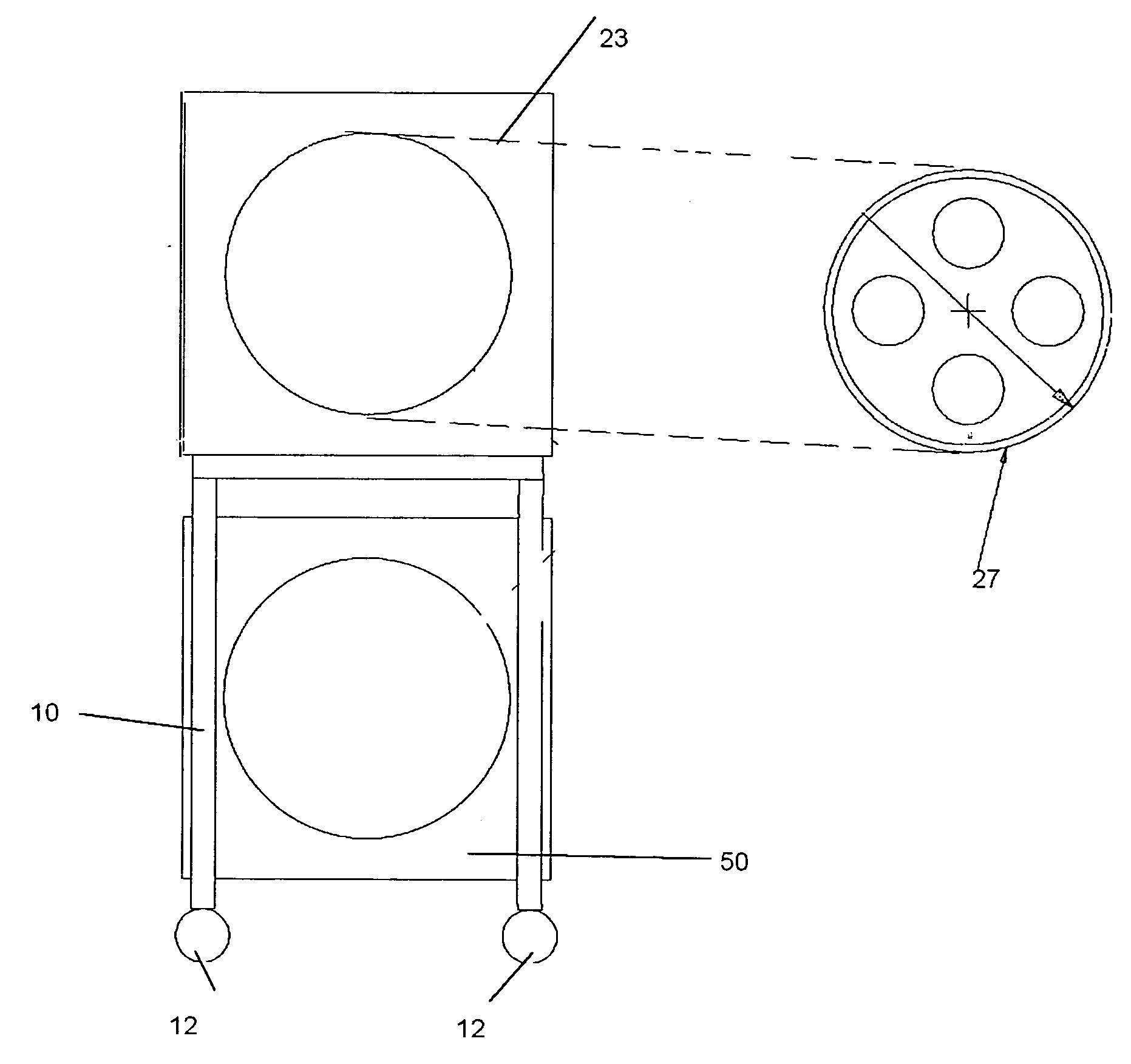Mobile furnace for heat treatment of agricultural materials in milling bins
a technology of agricultural materials and milling bins, which is applied in the direction of insect catchers and killers, agriculture tools and machines, horticulture, etc., can solve the problems of insufficient kill rates of target pests, inability to provide satisfactory kill rates for target pests, and inability to use expensive equipment, etc., to achieve the effect of reducing the number of pests
- Summary
- Abstract
- Description
- Claims
- Application Information
AI Technical Summary
Benefits of technology
Problems solved by technology
Method used
Image
Examples
example
[0025] This example illustrates heat treating a flour milling bin whose dimensions are 10×10×70 ft. A flexible 70 ft. heating duct having approximately ½ inch vent holes positioned approximately every six inches, was inserted into the top of the milling bin and the temperature of the heater was set at 194° F. The air handling device was adjusted to deliver an airflow of 2,500 CFM. Temperatures were measured by temperature sensors positioned at the top and the bottom of the milling bin over the course of 12 hours. The following table lists the measured temperatures at various times.
TIMETemperatureTemperature(hours)Top (° F.)Bottom (° F.)0138127114614321481453148147414914651481486148151814915312149154
[0026] As shown above, these airflow and temperature settings were effective for achieving substantially uniform temperatures in a 10×10×70 ft. milling bin over the course of several hours. These temperatures are effective for insect and pest control in agricultural materials without th...
PUM
 Login to View More
Login to View More Abstract
Description
Claims
Application Information
 Login to View More
Login to View More - R&D
- Intellectual Property
- Life Sciences
- Materials
- Tech Scout
- Unparalleled Data Quality
- Higher Quality Content
- 60% Fewer Hallucinations
Browse by: Latest US Patents, China's latest patents, Technical Efficacy Thesaurus, Application Domain, Technology Topic, Popular Technical Reports.
© 2025 PatSnap. All rights reserved.Legal|Privacy policy|Modern Slavery Act Transparency Statement|Sitemap|About US| Contact US: help@patsnap.com



